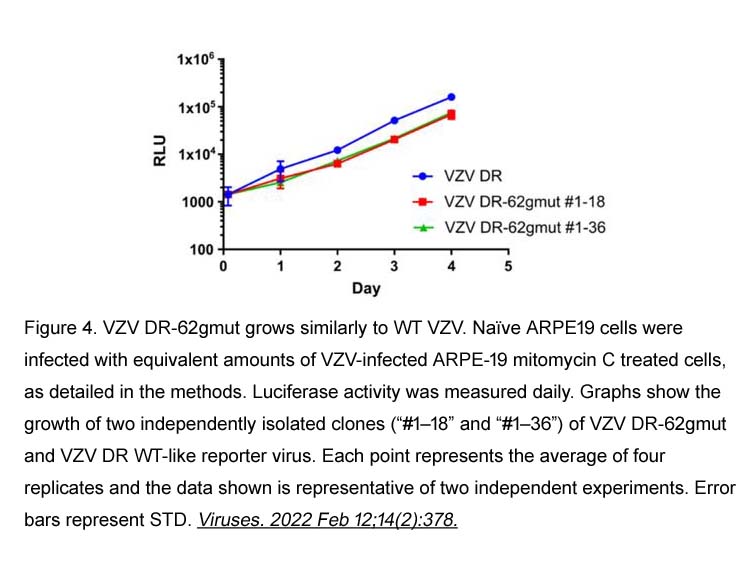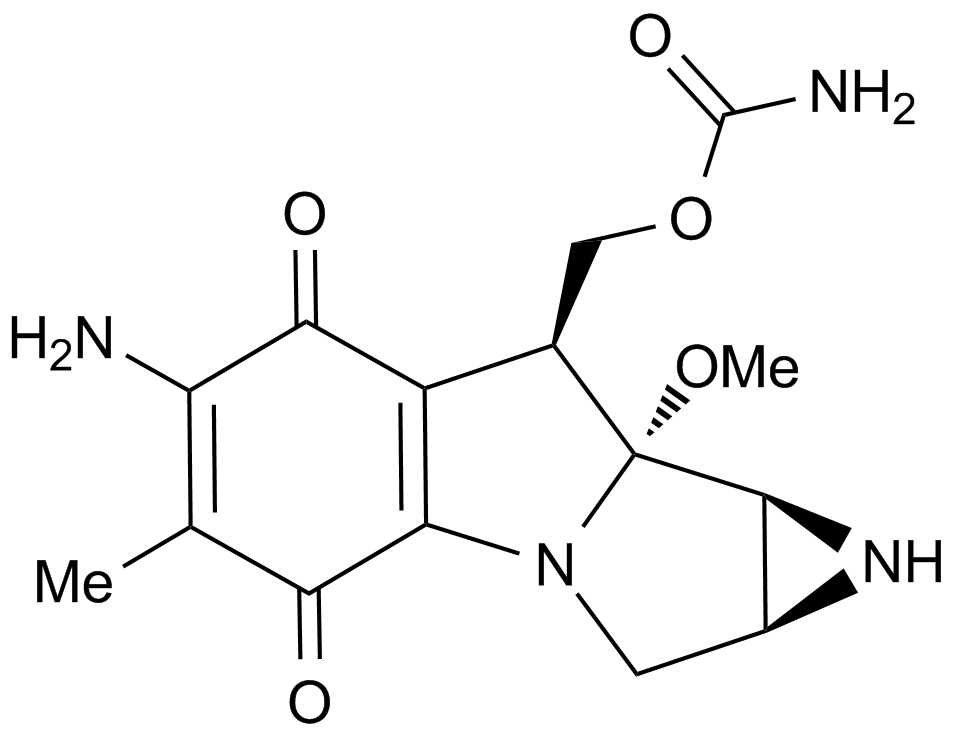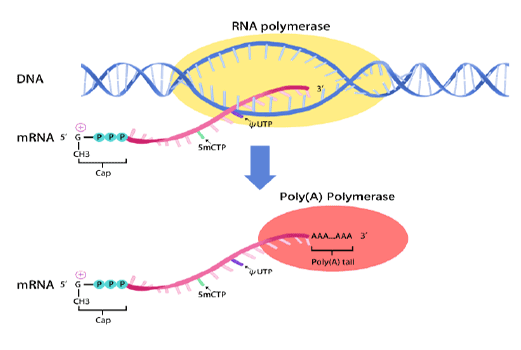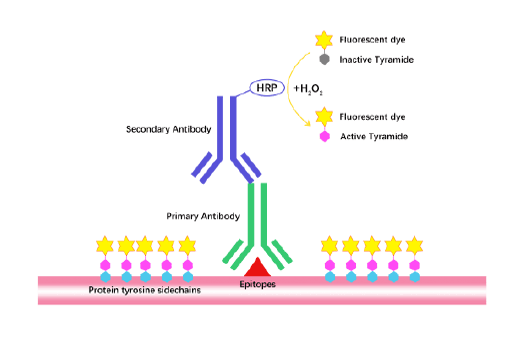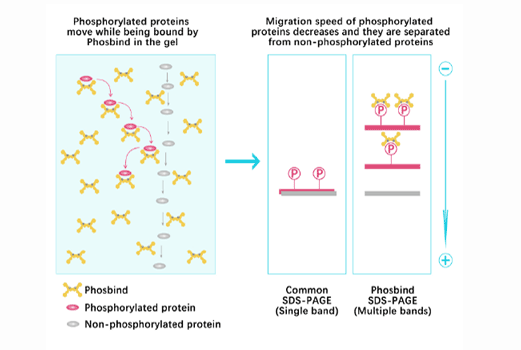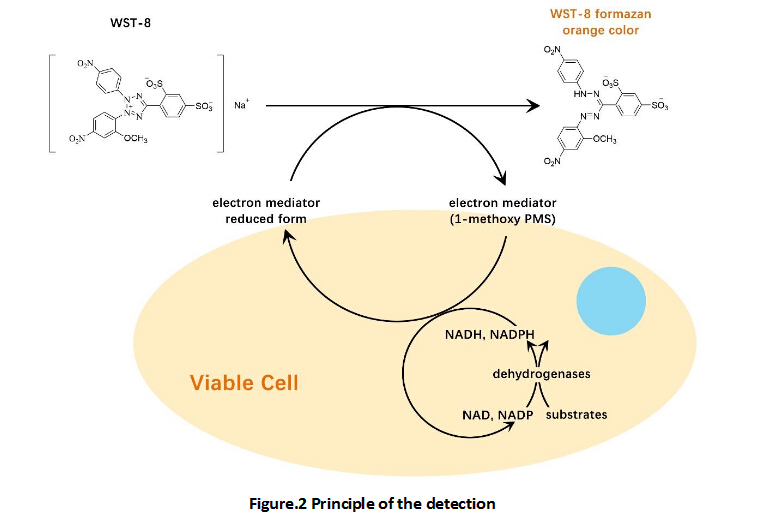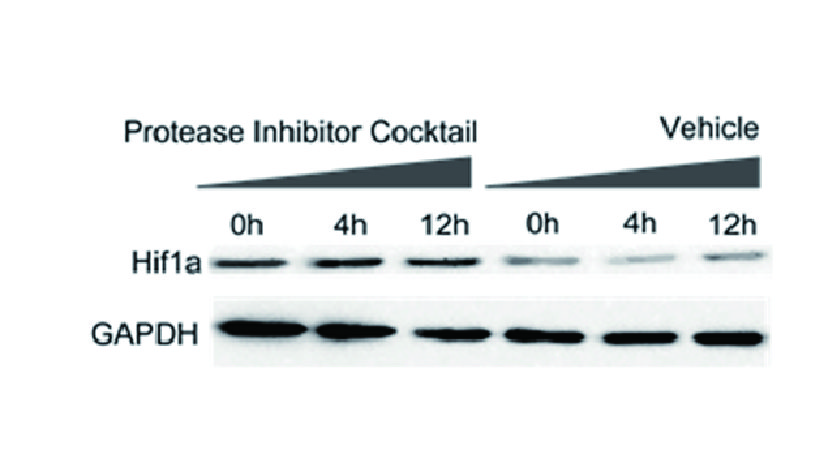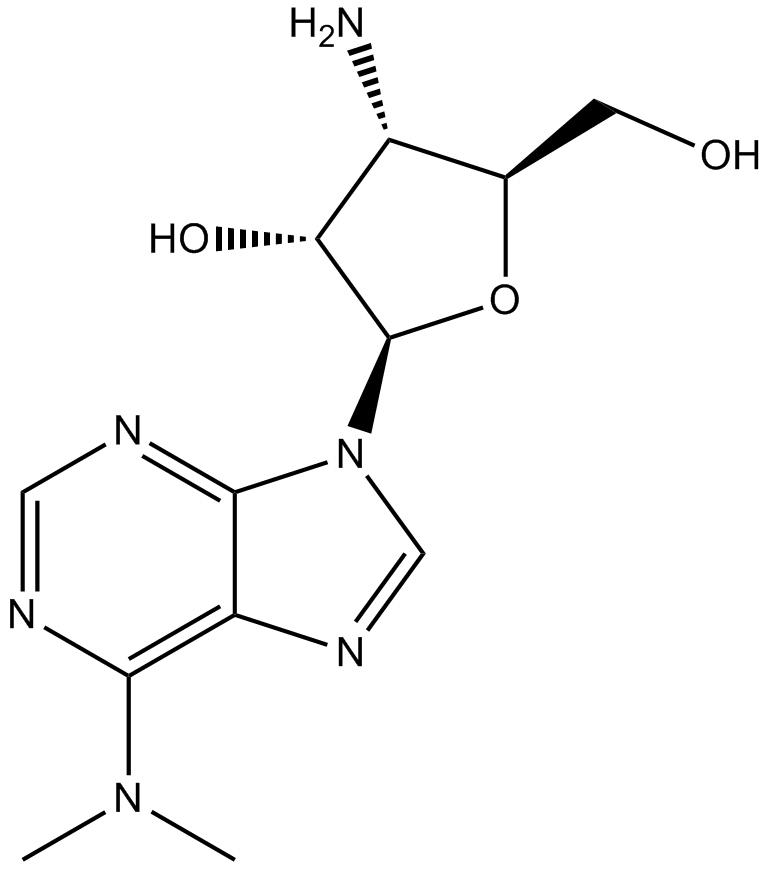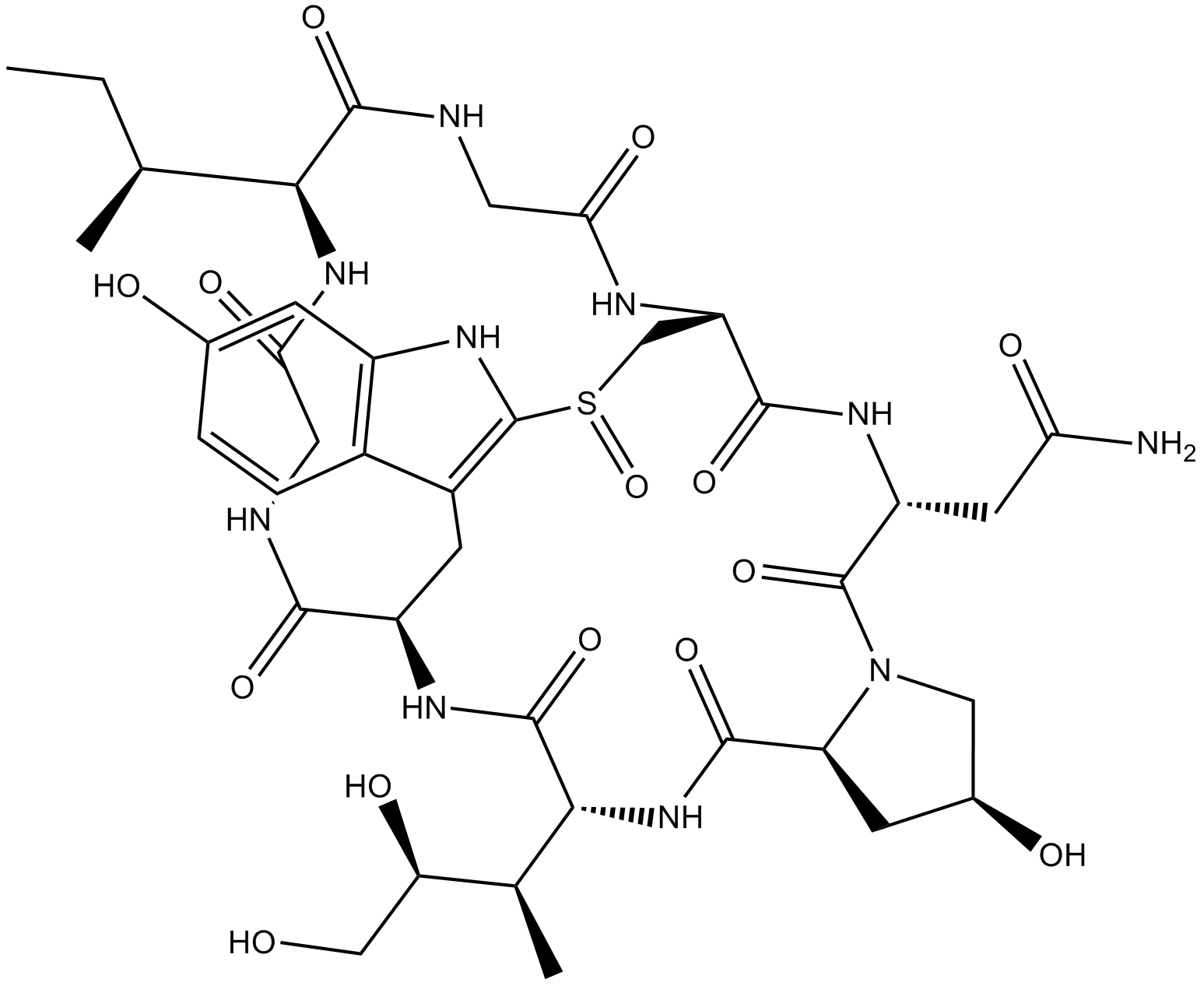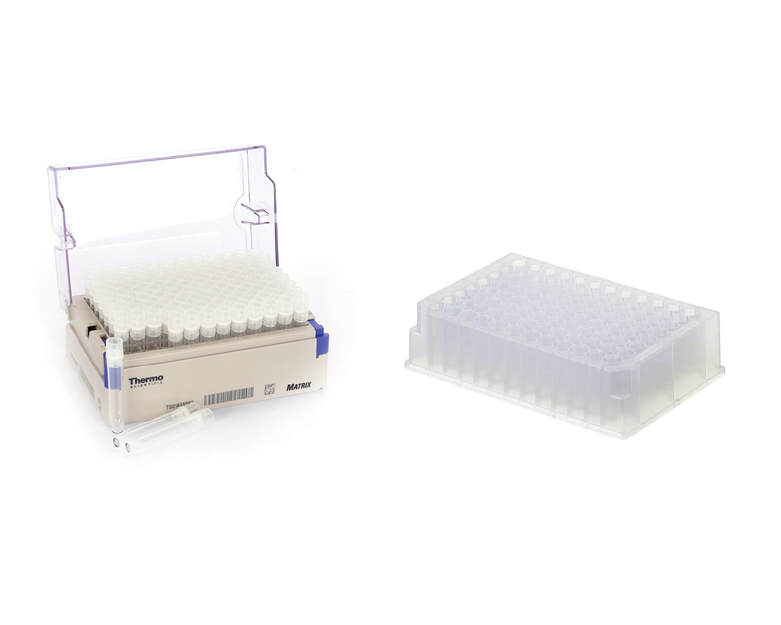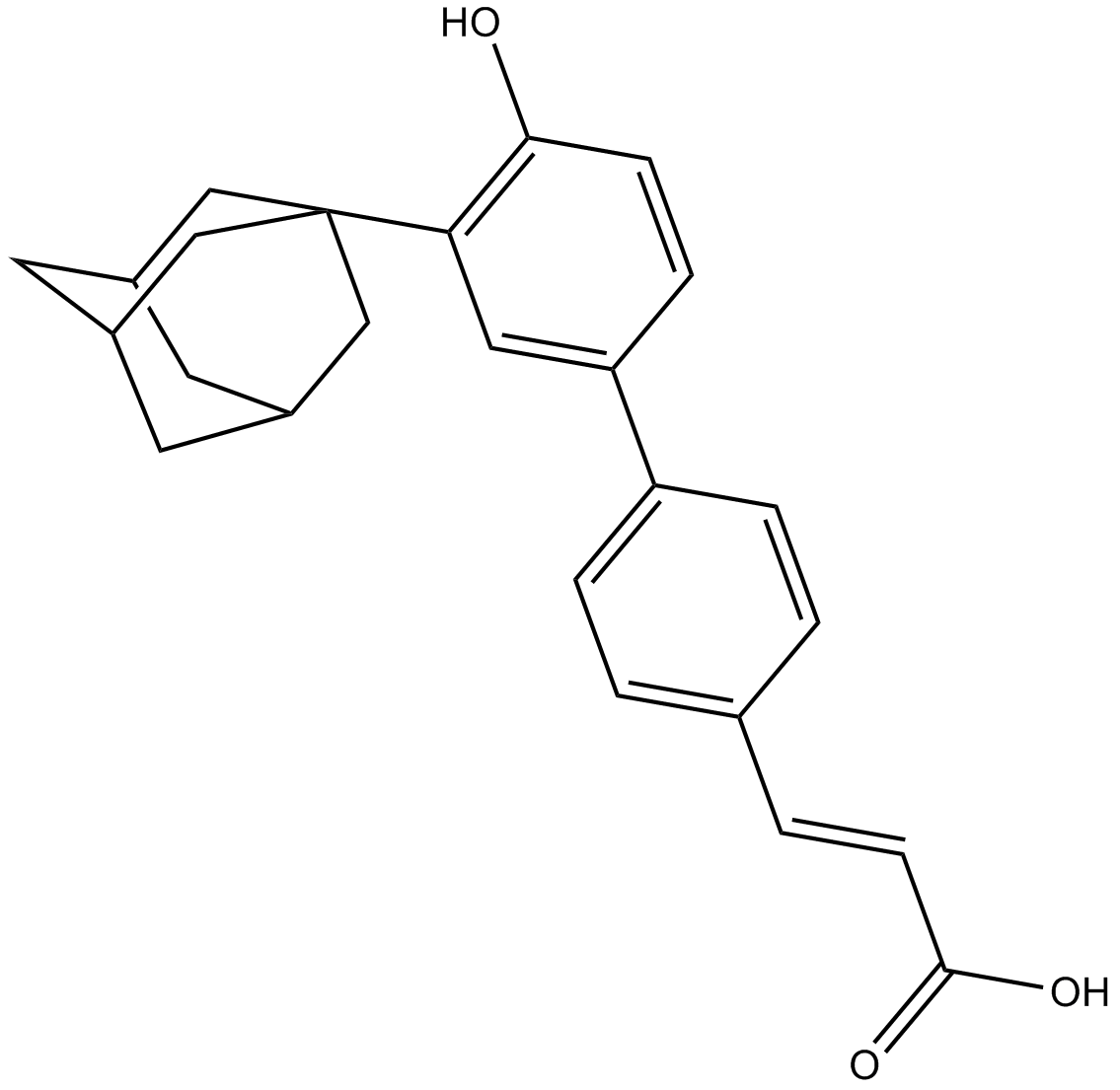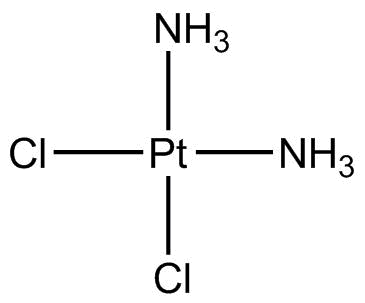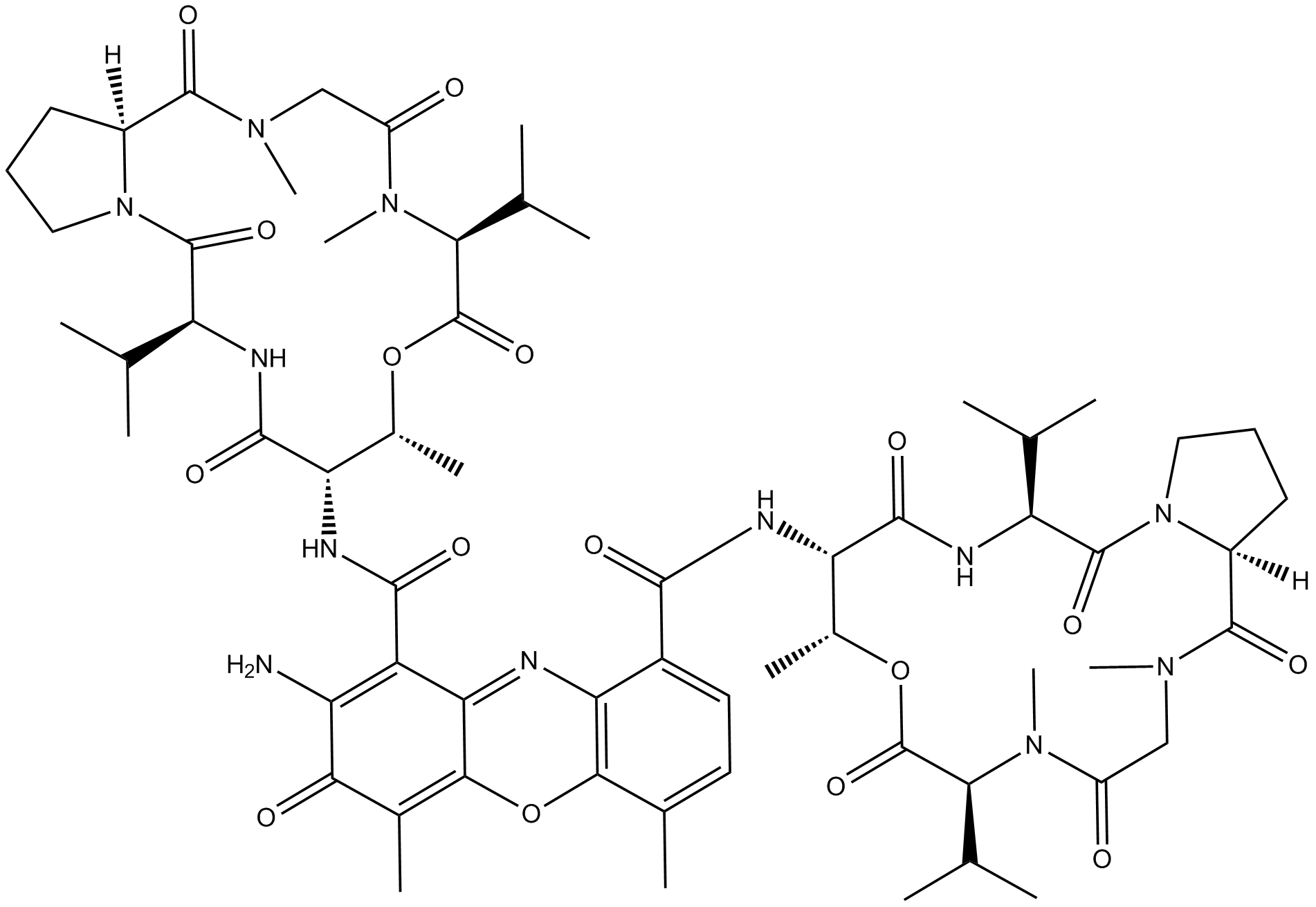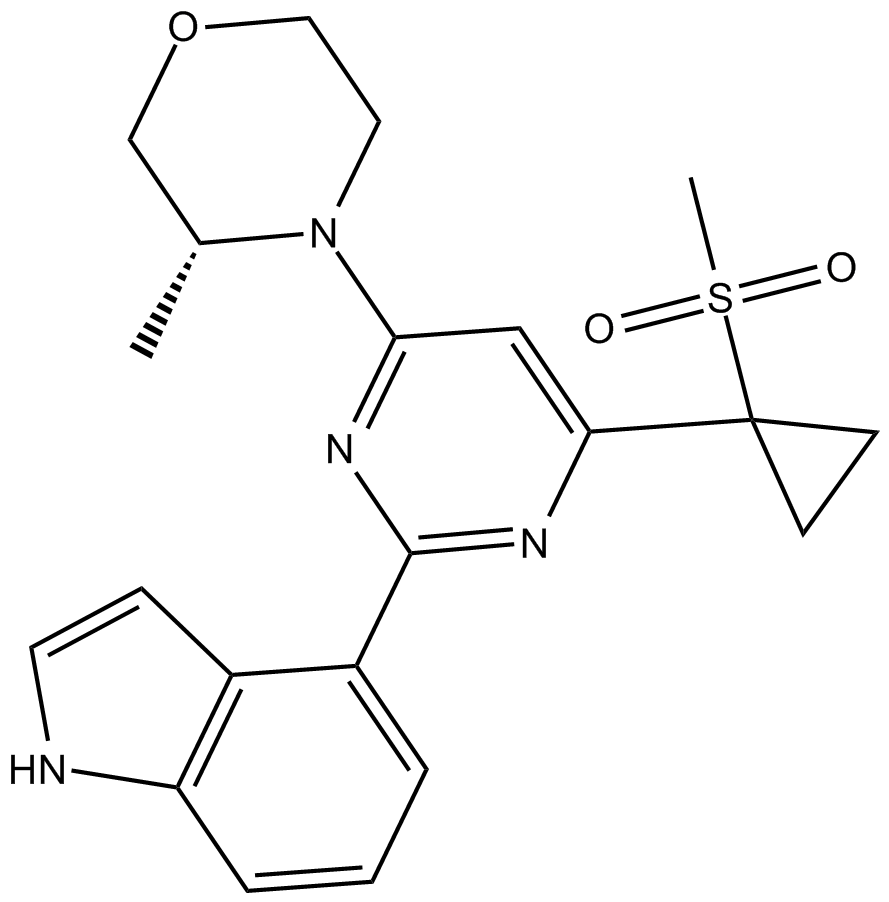Mitomycin C
Mitomycin C (CAS 50-07-7) is an antibiotic compound derived from Streptomyces caespitosus or Streptomyces lavendulae, exhibiting anti-cancer properties by interfering with DNA synthesis. Its mode of action involves direct formation of covalent adducts with DNA, impeding DNA replication. In PC3 cells, mitomycin C presents an EC50 of approximately 0.14 μM. Moreover, it can potentiate apoptosis induced by TRAIL (TNF-related apoptosis-inducing ligand) through mechanisms independent of p53, modulating apoptosis-related protein expression and caspase activation. Due to its cytotoxic mechanism, mitomycin C continues to serve as a useful compound in cancer research, particularly in apoptosis signaling studies.
References:
[1] Danshiitsoodol N, de Pinho CA, Matoba Y, Kumagai T, Sugiyama M. The mitomycin C (MMC)-binding protein from MMC-producing microorganisms protects from the lethal effect of bleomycin: crystallographic analysis to elucidate the binding mode of the antibiotic to the protein. J Mol Biol (2006) 360 (2): 398–408
[2] Hairong Cheng, Bo Hong, Lanlan Zhou, Joshua E. Allen, Guihua Tai, Robin Humphreys,David T. Dicker, Yingqiu Y. Liu & Wafik S. El-Deiry. Mitomycin C potentiates TRAIL-induced apoptosis through p53-independent upregulation of death receptors. Cell Cycle (2012) 11(17):3312-3323
[3] Juan Luis Vásquez, Per Ibsen, Henriette Lindberg, Julie Gehl. In Vitro and In Vivo Experiments on Electrochemotherapy for Bladder Cancer. Journal of Urology (2014)
- 1. Chunhui Zhu, Gang Liu, et al. "tRF16 affects NFKBIA stability and promotes osteoarthritis progression by regulating ALKBH5 expression in m6A-dependent manner." Commun Biol. 2025 Jun 5;8(1):868 PMID: 40473927
- 2. Ke Zhu, Fa-Peng Zhang, Chao Qin. "Targeting the Notch1‐YY1‐ICAM1 Signaling Axis Enhances the Efficacy of Immunotherapy in HCC by Activating CD8+ T‐Cell‐Driven Cancer Cell Pyroptosis." Adv Sci (Weinh). 2025 Nov 21:e12845 PMID: 41271562
- 3. Lingling Zhang, Amparo Toboso-Navasa, et al. "Regulation of BCR-mediated Ca2+ mobilization by MIZ1-TIMBIM4 safeguards IgG1+ GC B cell positive selection." bioRvix. July 19, 2023
- 4. Betty W. Wu, Michael B. Yee, et al. "Antiviral Targeting of Varicella Zoster Virus Replication and Neuronal Reactivation Using CRISPR/Cas9 Cleavage of the Duplicated Open Reading Frames 62/71." Viruses. 2022 Feb 12;14(2):378 PMID: 35215971
- 5. Zhaojin Yu, Wensi Liu, et al. "HLA-A2. 1-restricted ECM1-derived epitope LA through DC cross-activation priming CD8+ T and NK cells: a novel therapeutic tumour vaccine." J Hematol Oncol. 2021 Apr 28;14(1):71 PMID: 33910591
- 6. Liu TP, Hsieh YY, et al. "Systematic polypharmacology and drug repurposing via an integrated L1000-based Connectivity Map database mining." R Soc Open Sci. 2018 Nov 28;5(11):181321 PMID: 30564416
- 7. Deng Y, Li F, et al. "Triptolide sensitizes breast cancer cells to Doxorubicin through the DNA damage response inhibition." Mol Carcinog. 2018 Jun;57(6):807-814 PMID: 29500880
- 8. Meng L, Wang X, et al. "BAF53a is a potential prognostic biomarker and promotes invasion and epithelial-mesenchymal transition of glioma cells." Oncol Rep. 2017 Dec;38(6):3327-3334 PMID: 29039584
| Physical Appearance | A solid |
| Storage | Store at -20°C |
| M.Wt | 334.33 |
| Cas No. | 50-07-7 |
| Formula | C15H18N4O5 |
| Synonyms | Ametycine |
| Solubility | insoluble in H2O; insoluble in EtOH; ≥16.7 mg/mL in DMSO |
| Chemical Name | ((1aS,8S,8aR,8bS)-6-amino-8a-methoxy-5-methyl-4,7-dioxo-1,1a,2,4,7,8,8a,8b-octahydroazirino[2',3':3,4]pyrrolo[1,2-a]indol-8-yl)methyl carbamate |
| SDF | Download SDF |
| Canonical SMILES | CC(C(C(N(C[C@@H]1N[C@@H]11)[C@]1([C@@H]1COC(N)=O)OC)=C1C1=O)=O)=C1N |
| Shipping Condition | Small Molecules with Blue Ice, Modified Nucleotides with Dry Ice. |
| General tips | We do not recommend long-term storage for the solution, please use it up soon. |
| Cell experiment [1]: | |
|
Cell lines |
Colon adenocarcinoma HCT116, HCT116 (p53-/-) colon cancer, HT-29 human colon cancer cells, human bladder cancer cell line SW780 |
|
Preparation method |
The solubility of this compound in DMSO is >16.7mg/mL. General tips for obtaining a higher concentration: Please warm the tube at 37 ℃ for 10 minutes and/or shake it in the ultrasonic bath for a while. Stock solution can be stored below -20℃ for several months. |
|
Reacting condition |
1 μM, 5 μM, 10 μM, 12 h or 24 h |
|
Applications |
MMC substantially enhanced the effect of TRAIL on suppression of the HCT116 (p53-/-) cell proliferation. MMC enhanced TRAIL-induced apoptosis in TRAIL-resistant HT-29 cells. Pretreatment with MMC enhanced the sensitivity to lexatumumab and mapatumumab in HCT116 (p53-/-) cells and HT-29 cells. MMC sensitized colon cancer cells to TRAIL-induced apoptosis through downregulation of anti-apoptotic proteins, and upregulation of cell survival proteins and TRAIL death receptors. |
| Animal experiment [1]: | |
|
Animal models |
Mice bearing xenografted HCT116 (p53-/-) colon tumors and HT-29 colon tumors |
|
Dosage form |
Intraperitoneal injection, 1 mg/kg, |
|
Application |
Animals were treated with MMC (1 mg/kg) and intravenous dose of TRAIL (100 μg) every other day in combination therapy regimen for 10 consecutive cycles. The combination therapy significantly suppressed tumor growth with no effects on the weight. |
|
Other notes |
Please test the solubility of all compounds indoor, and the actual solubility may slightly differ with the theoretical value. This is caused by an experimental system error and it is normal. |
|
References: [1]. Hairong Cheng, Bo Hong, Lanlan Zhou, Joshua E. Allen, Guihua Tai, Robin Humphreys,David T. Dicker, Yingqiu Y. Liu & Wafik S. El-Deiry. Mitomycin C potentiates TRAIL-induced apoptosis through p53-independent upregulation of death receptors. Cell Cycle (2012) 11(17):3312-3323 |
|
Quality Control & MSDS
- View current batch:
Chemical structure
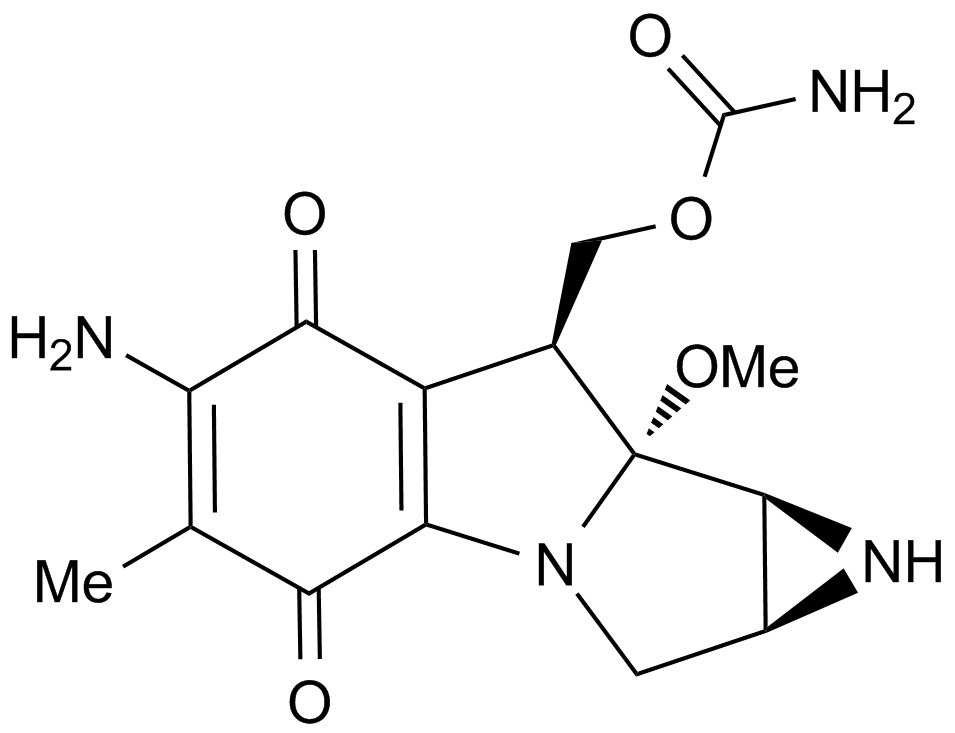
Related Biological Data
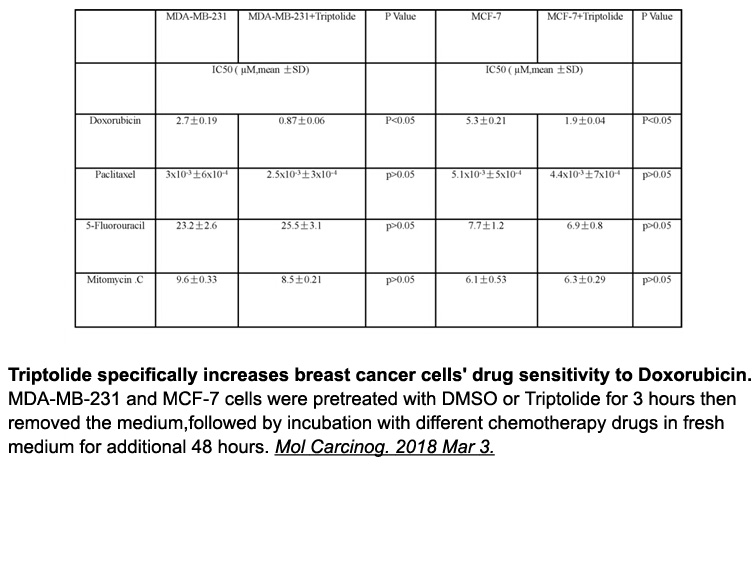
Related Biological Data
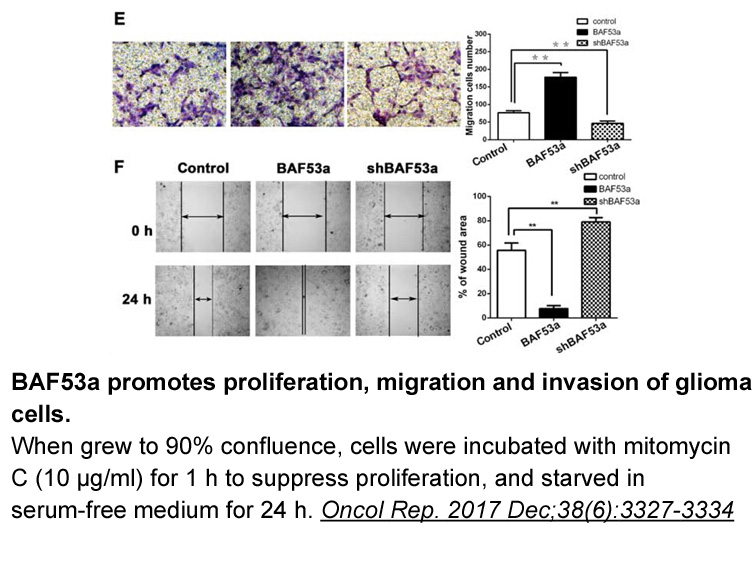
Related Biological Data
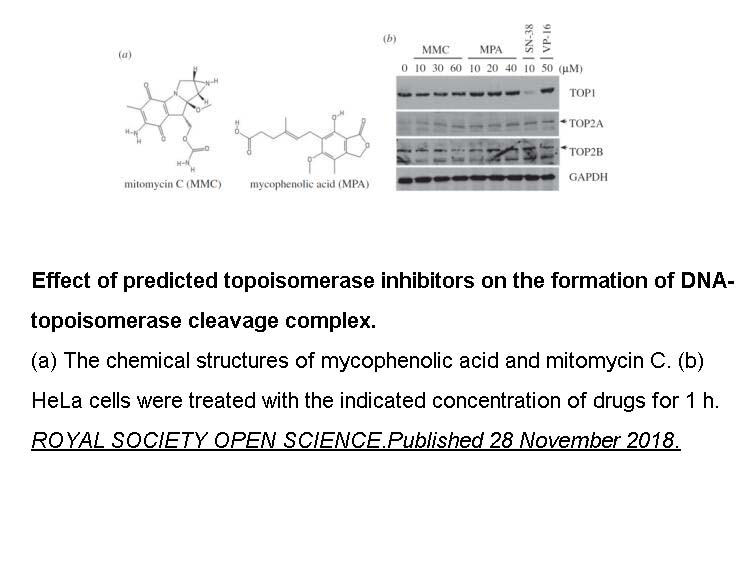
Related Biological Data
